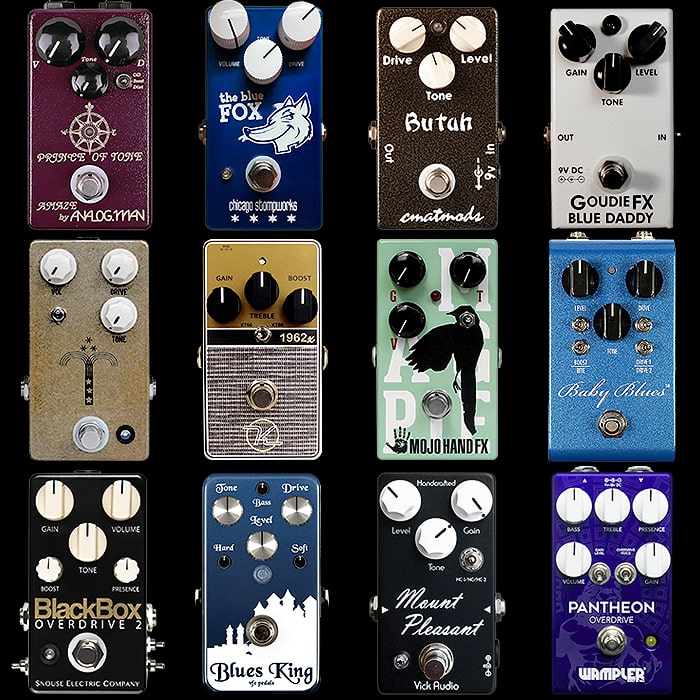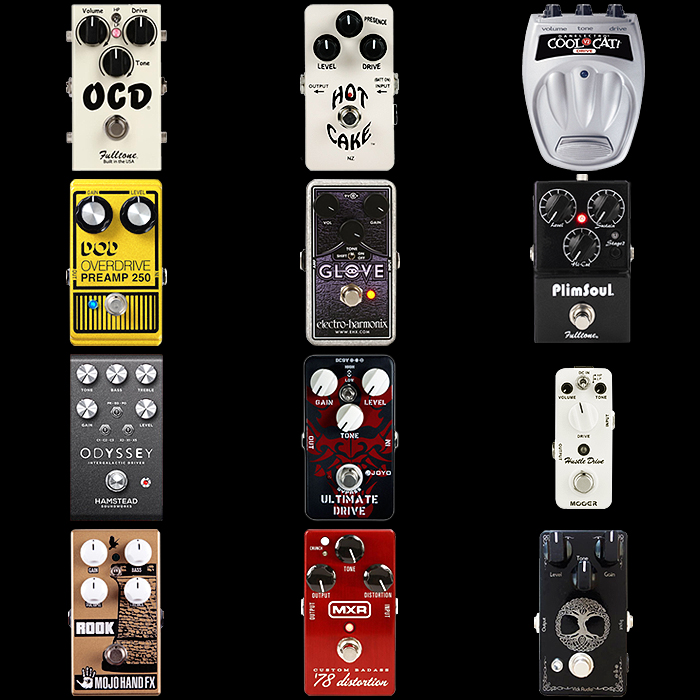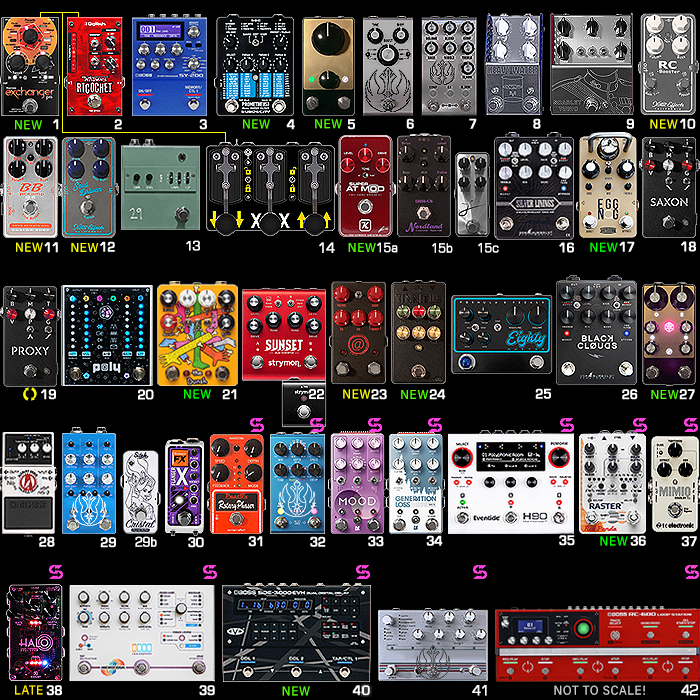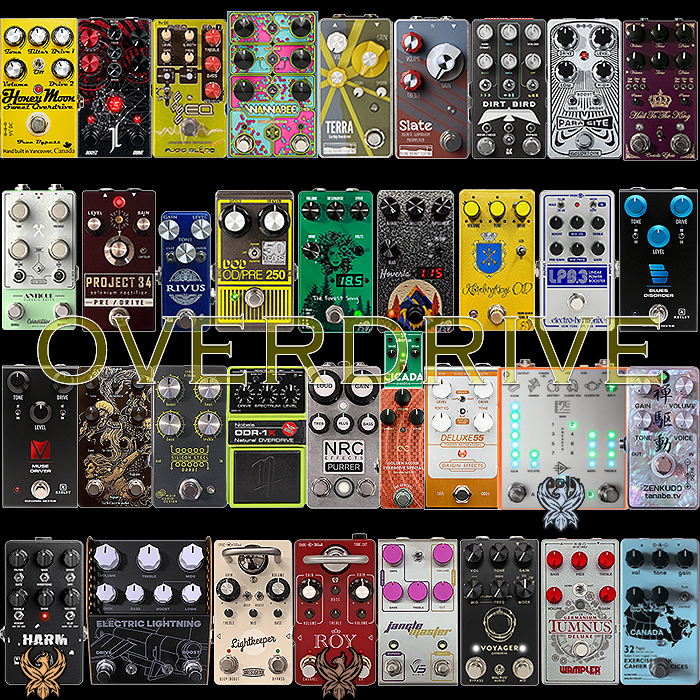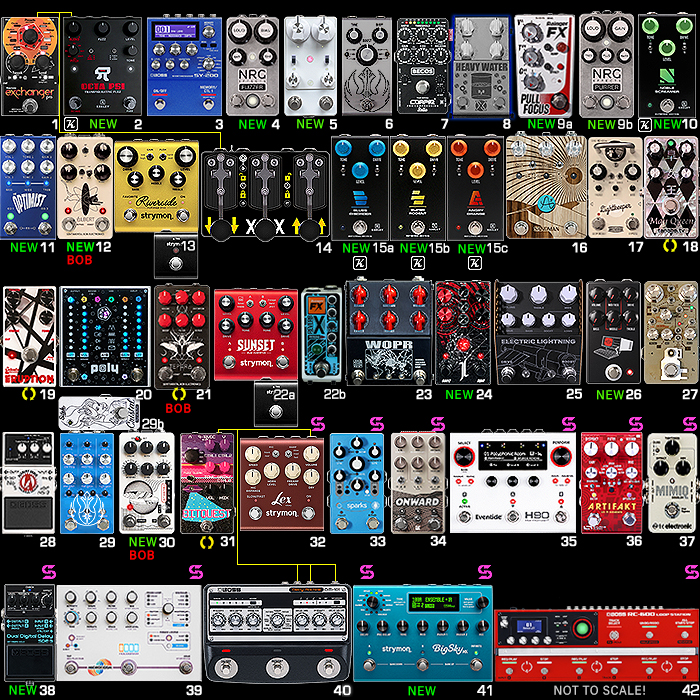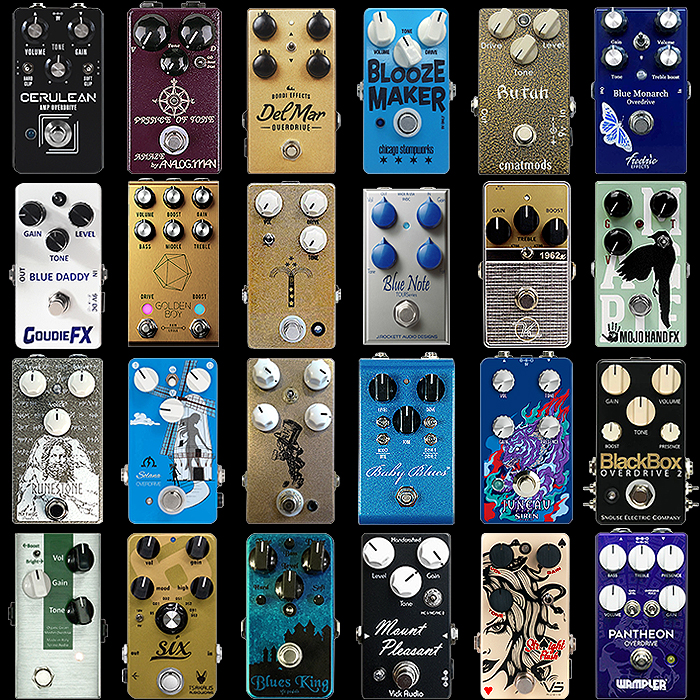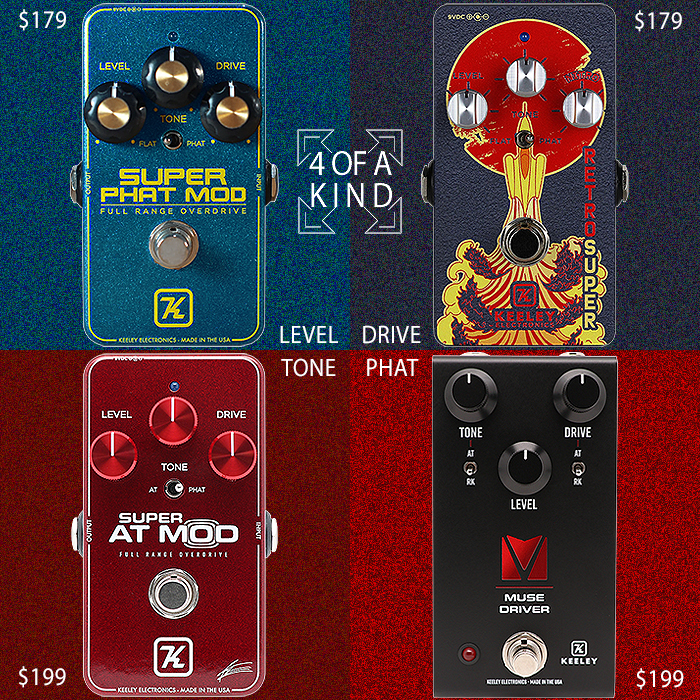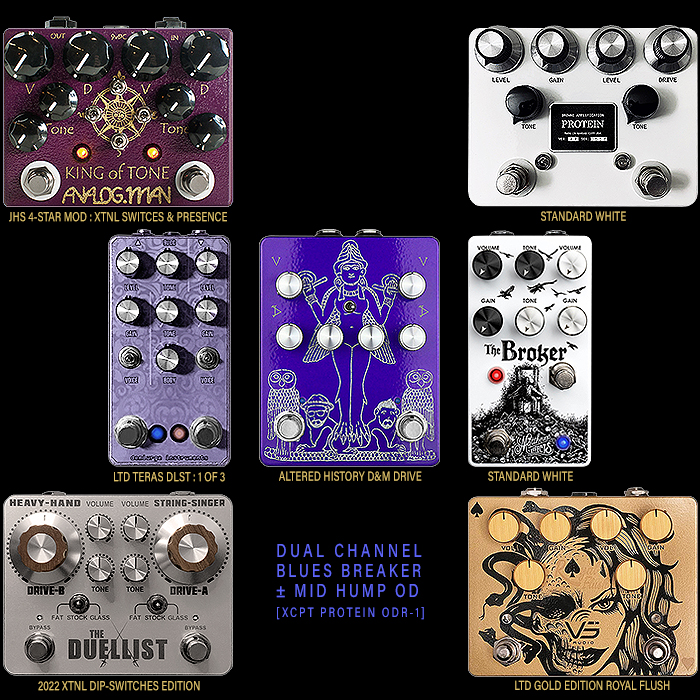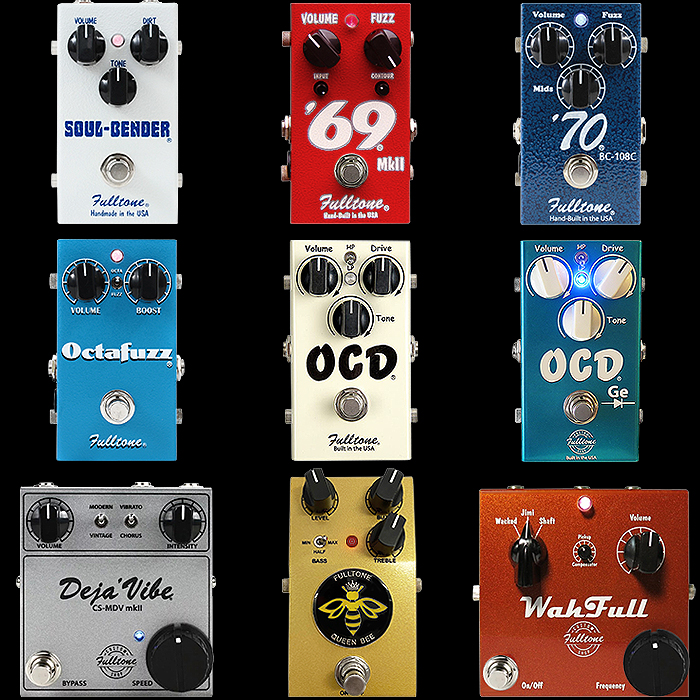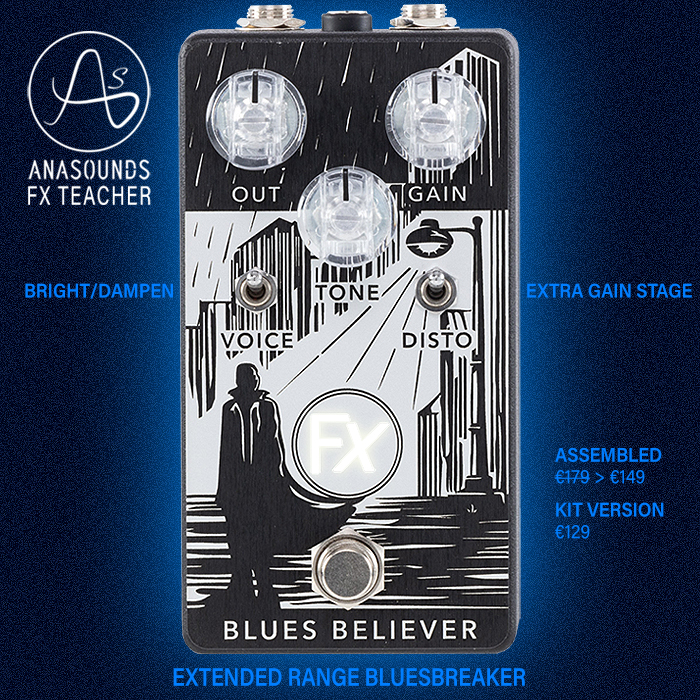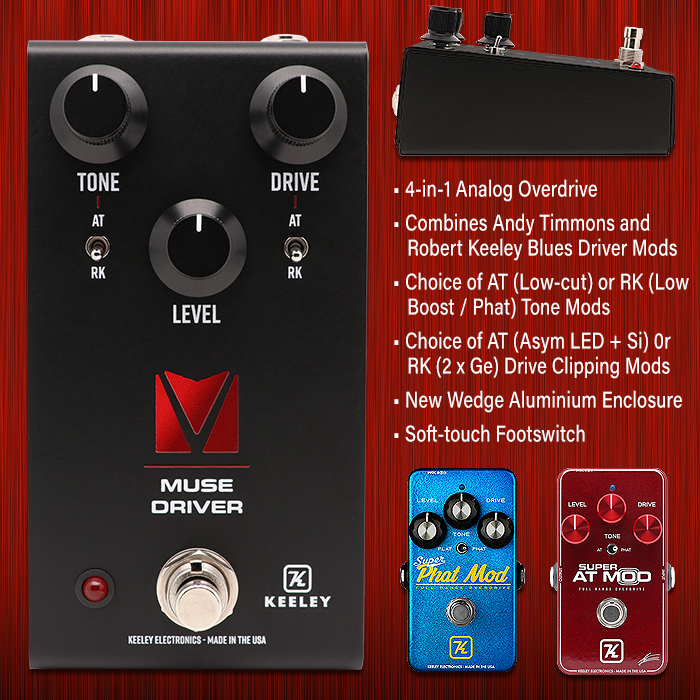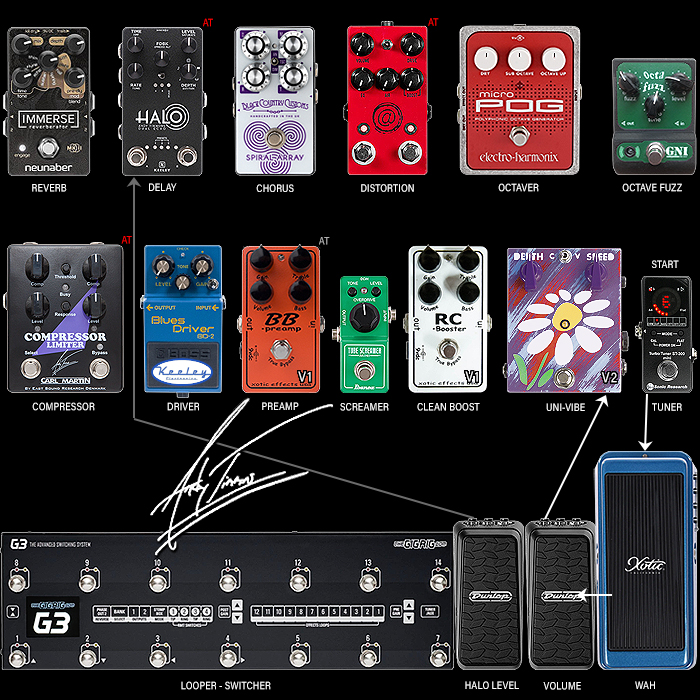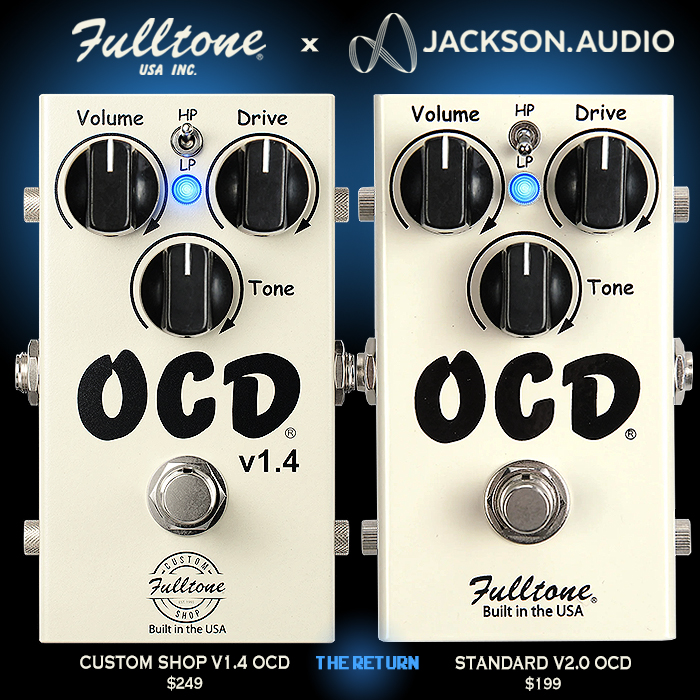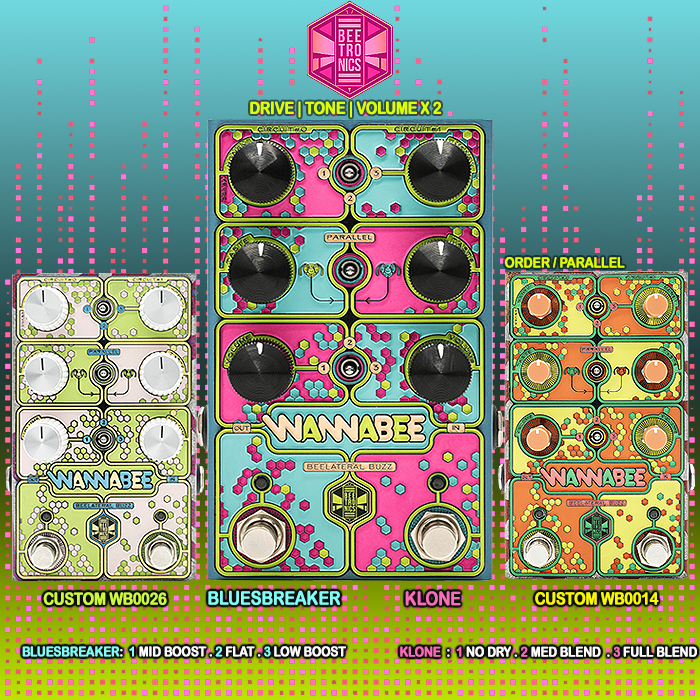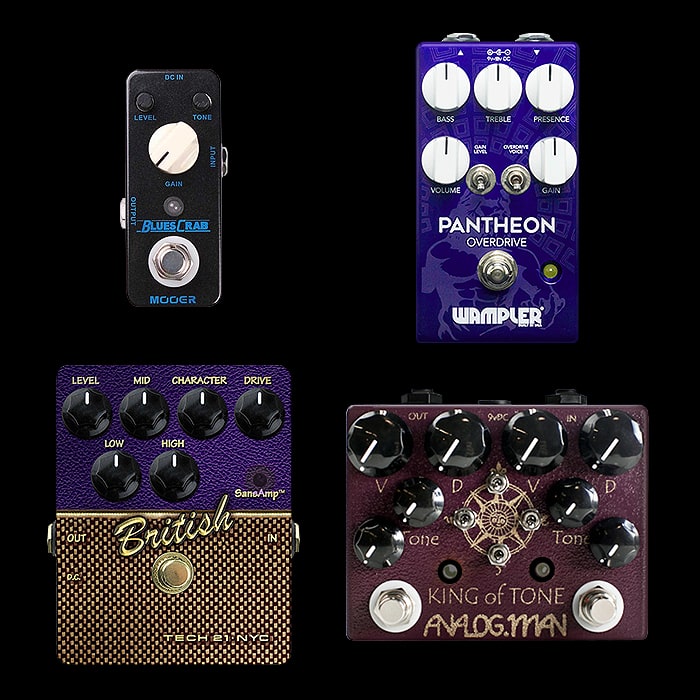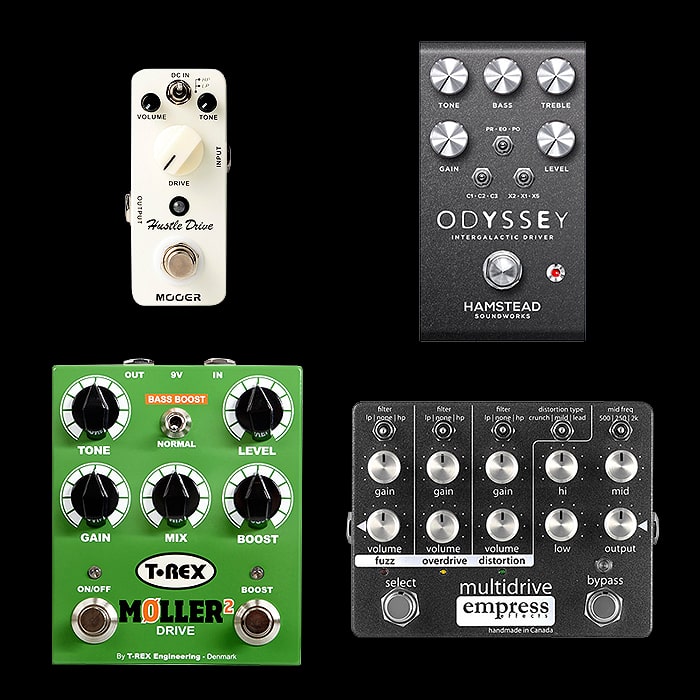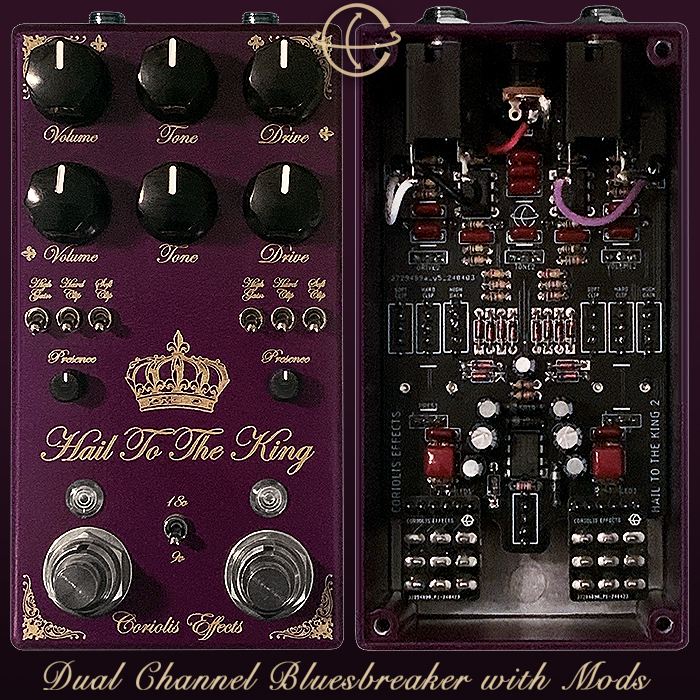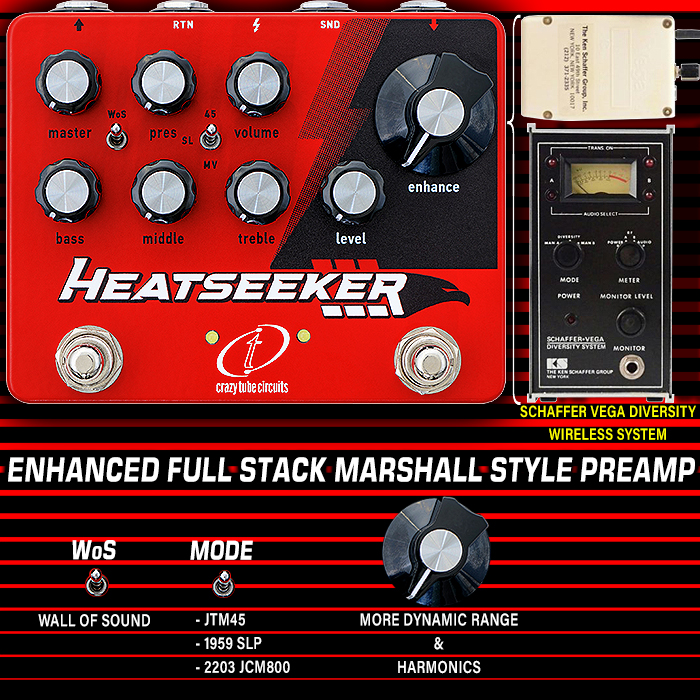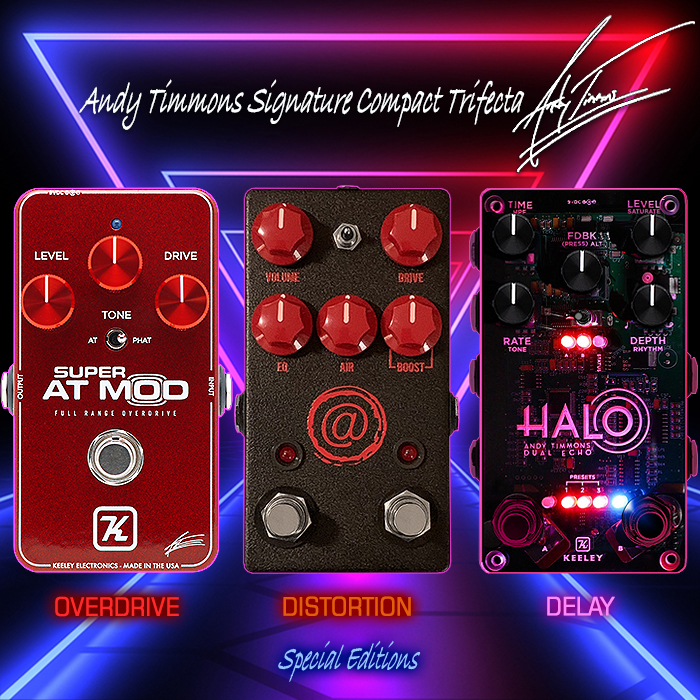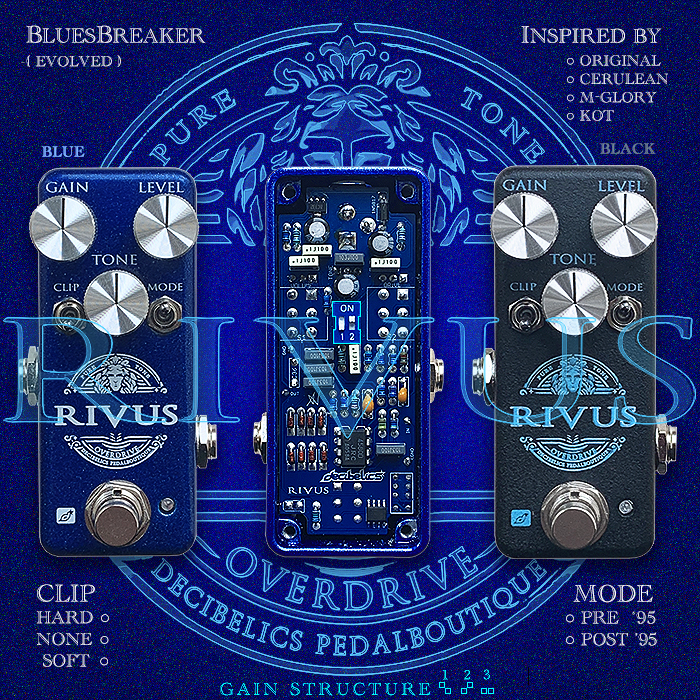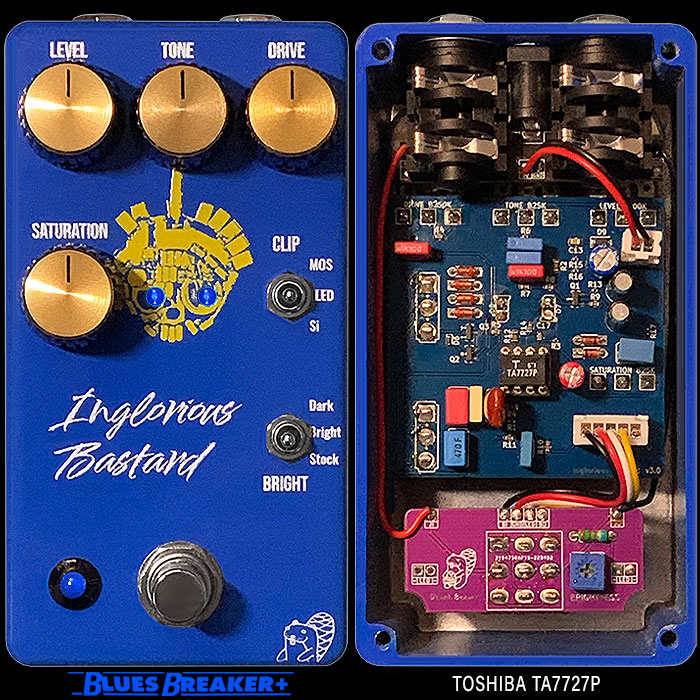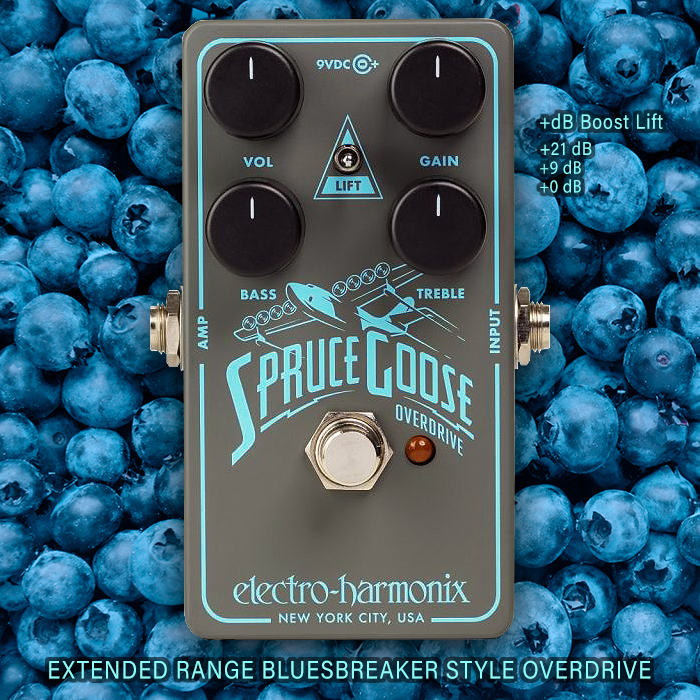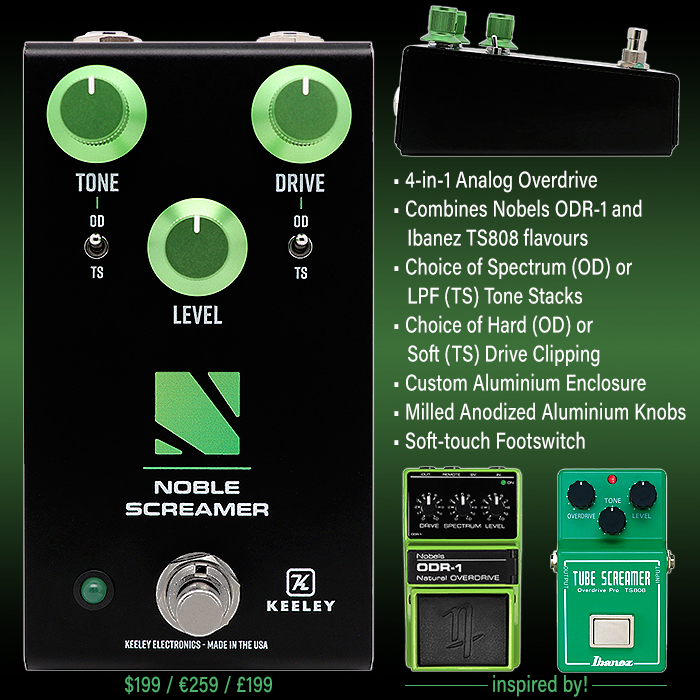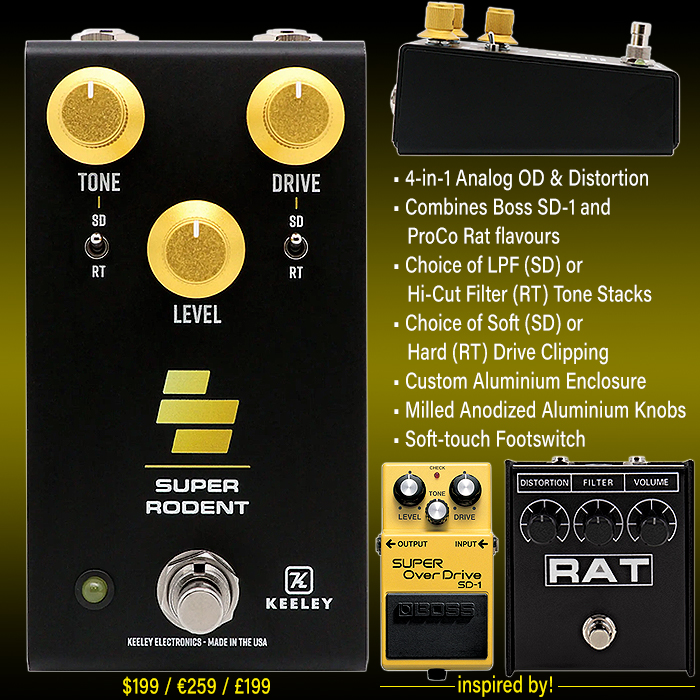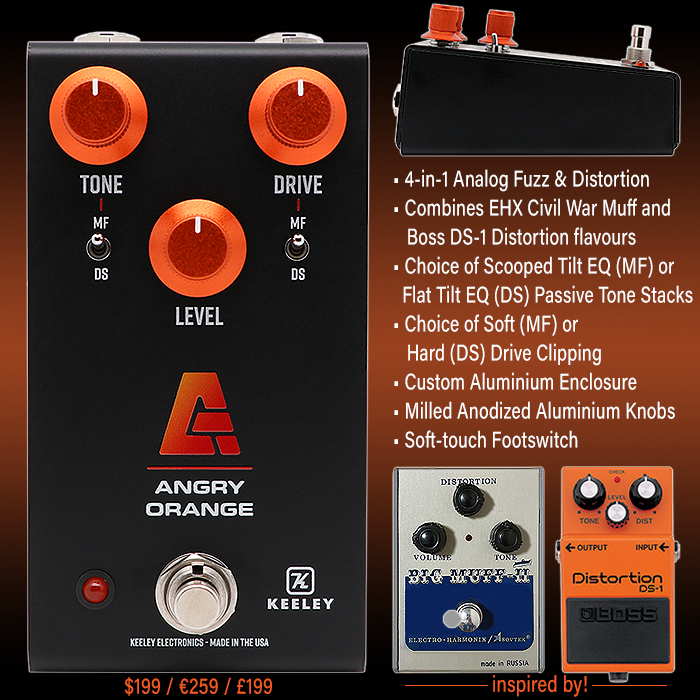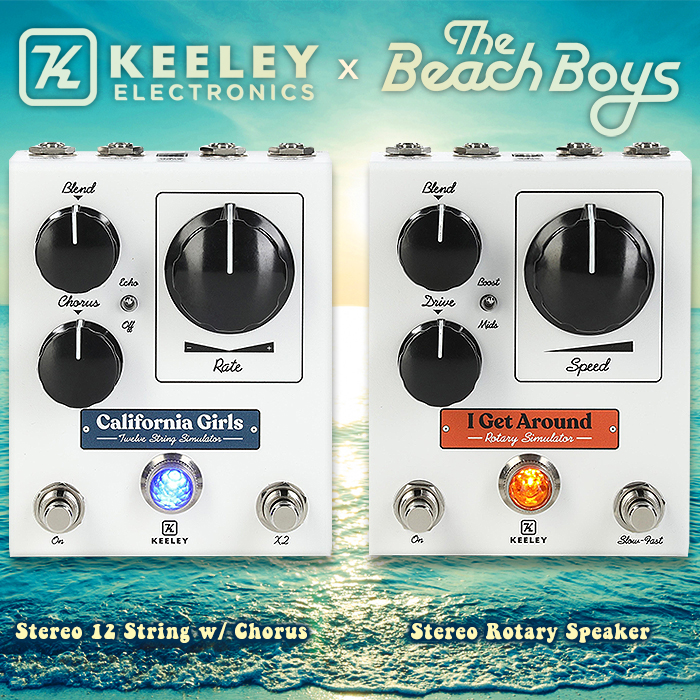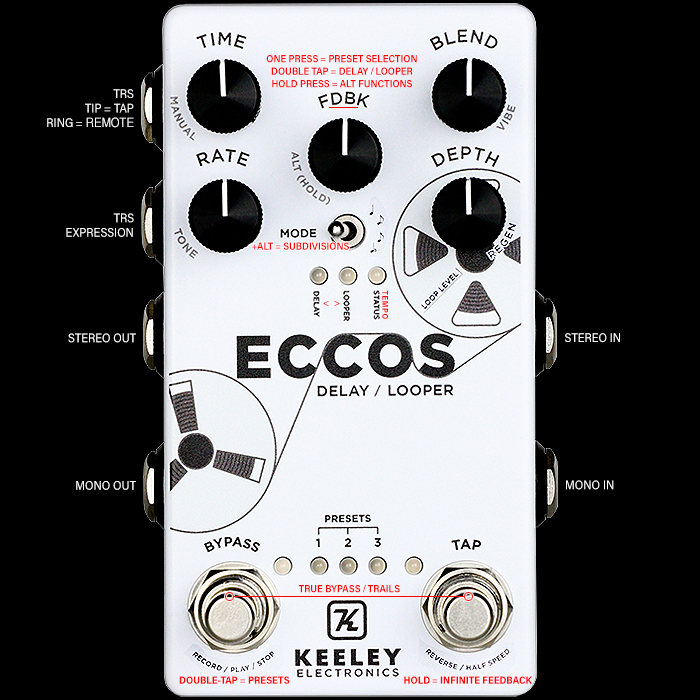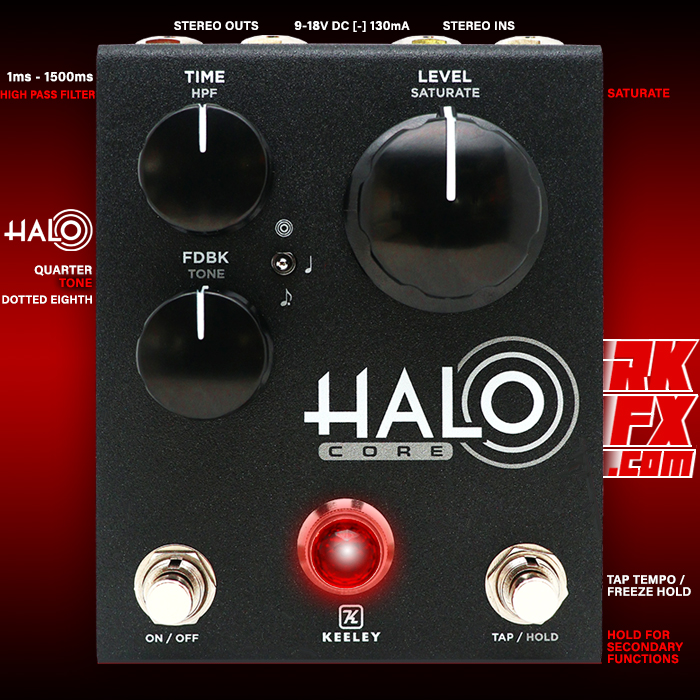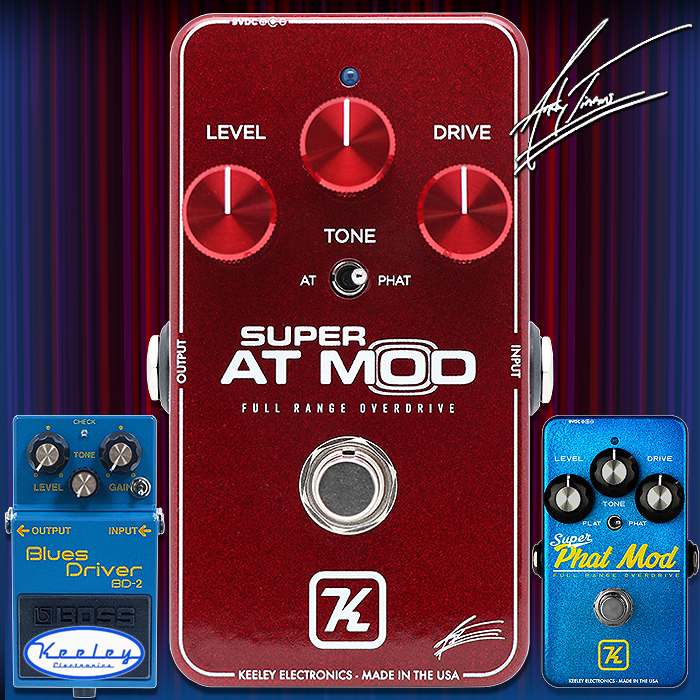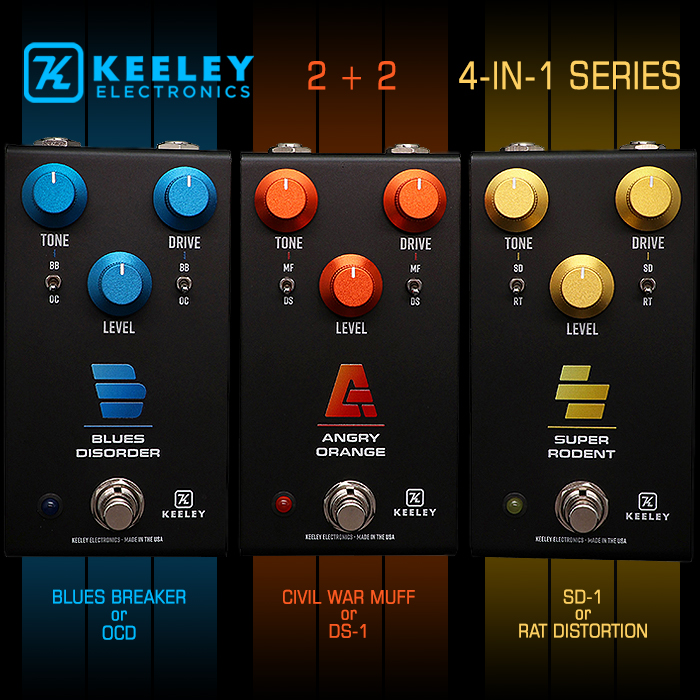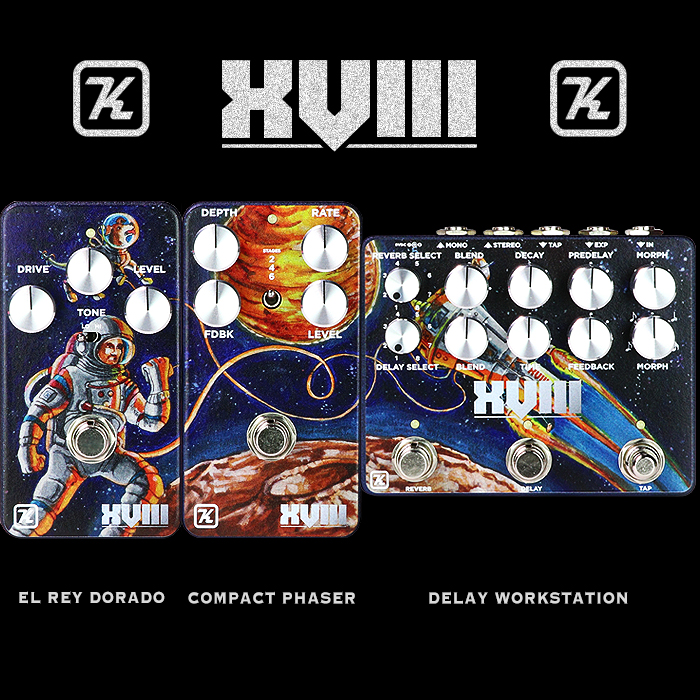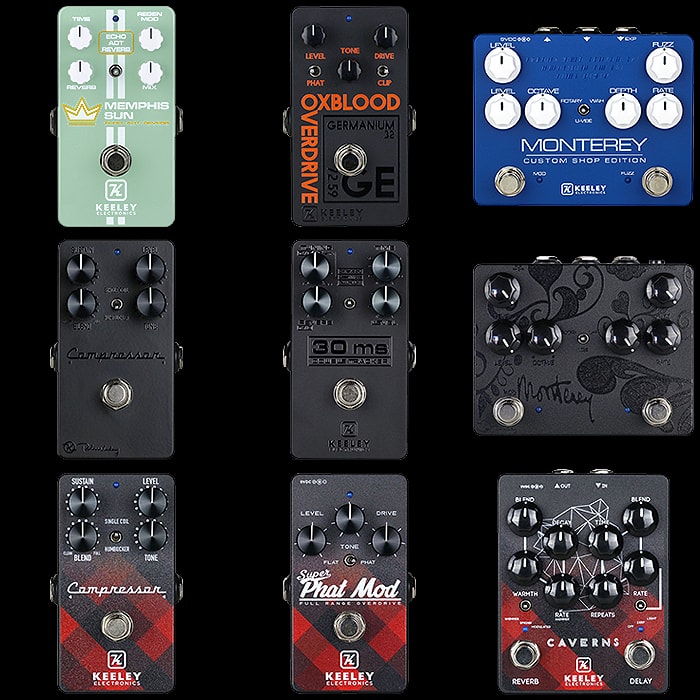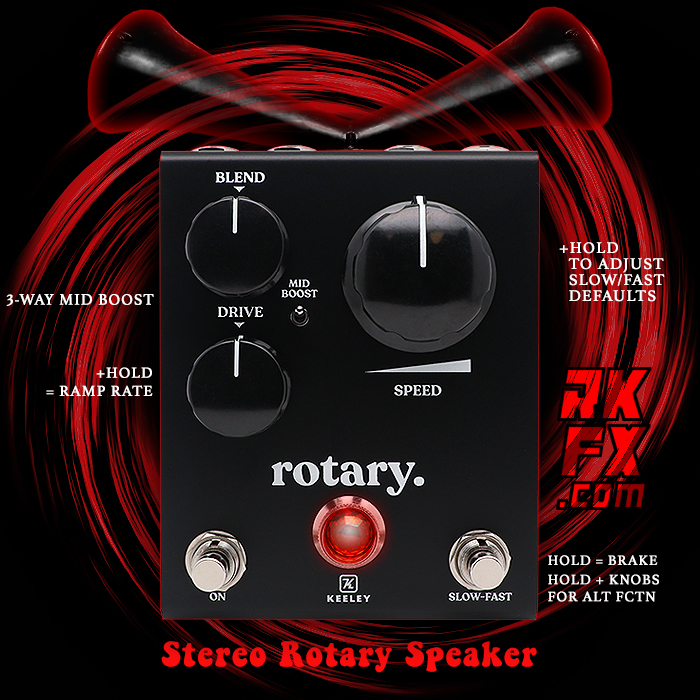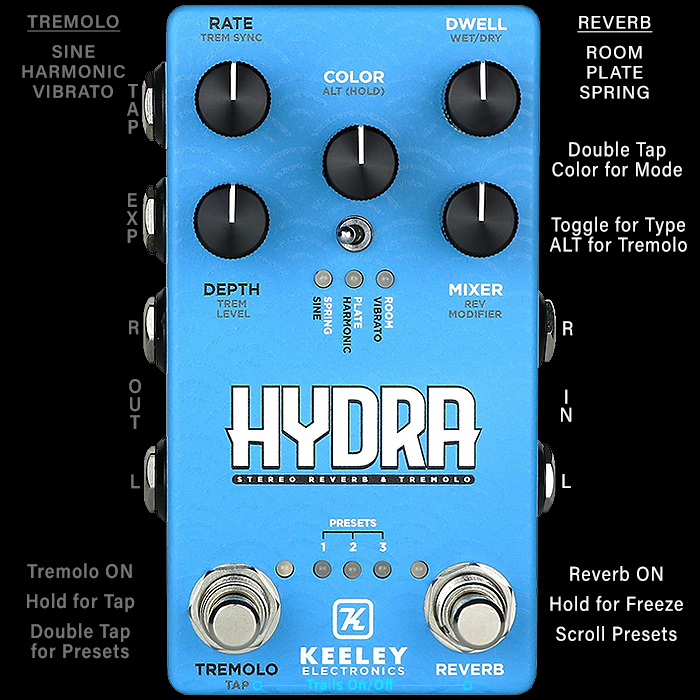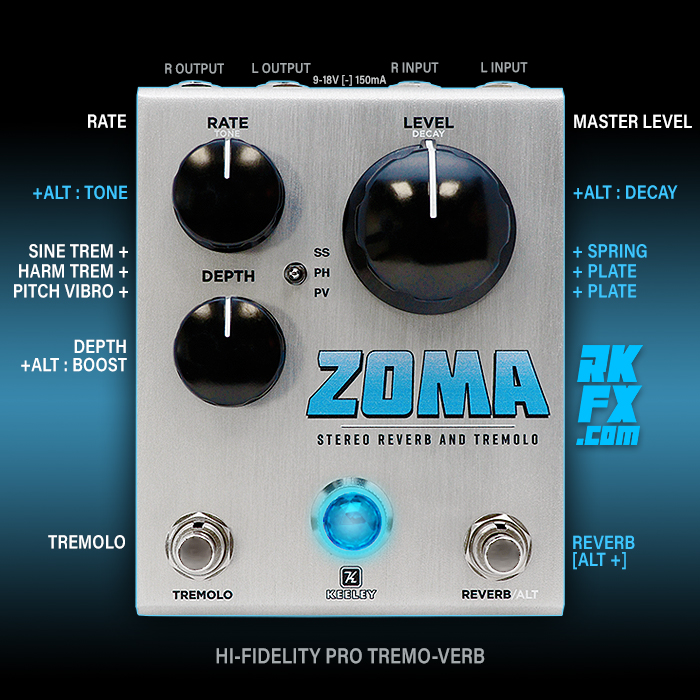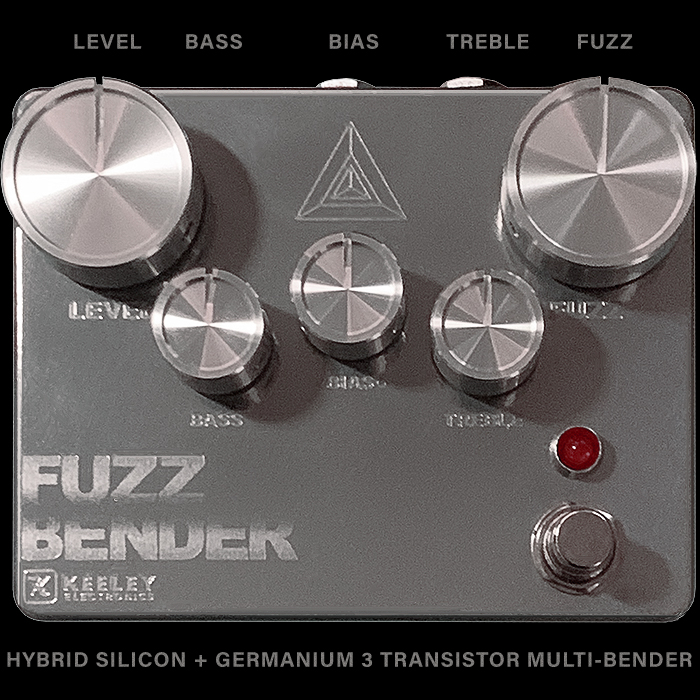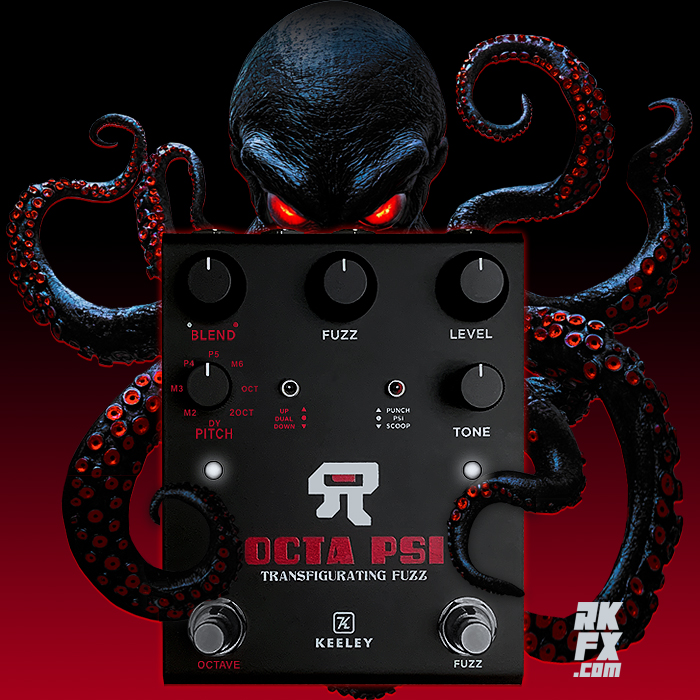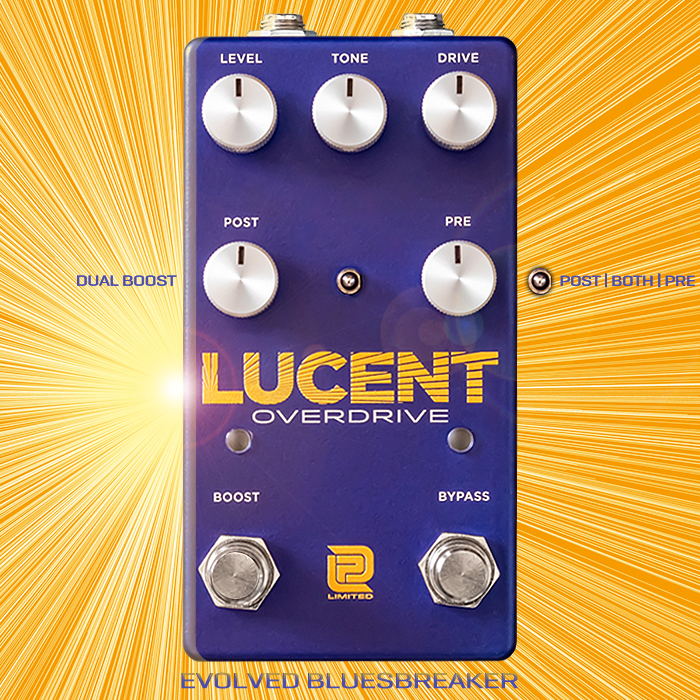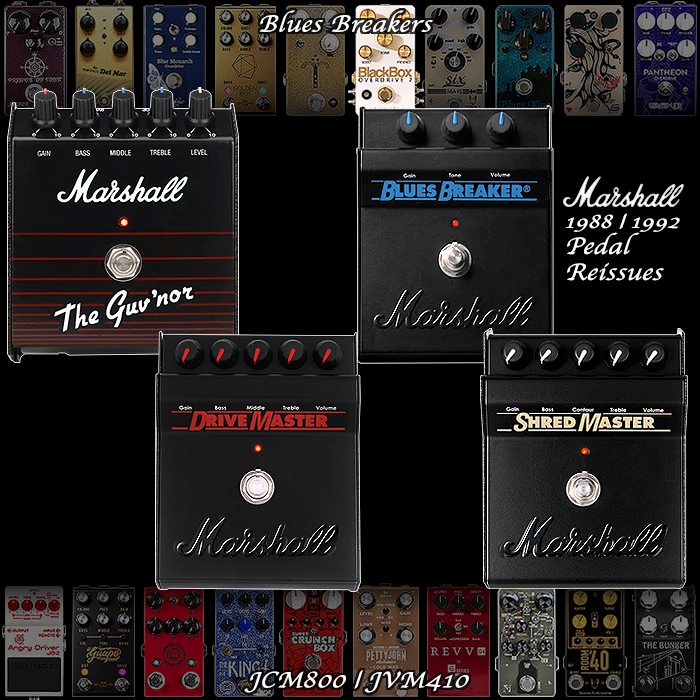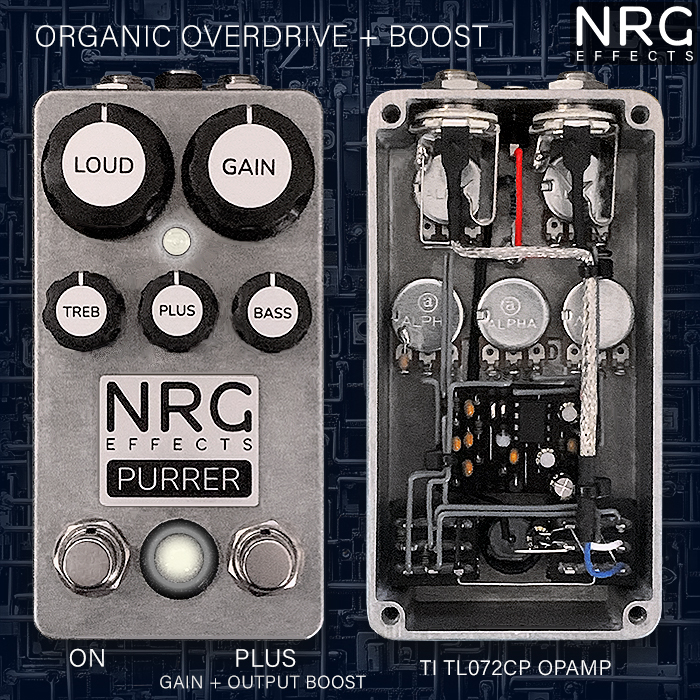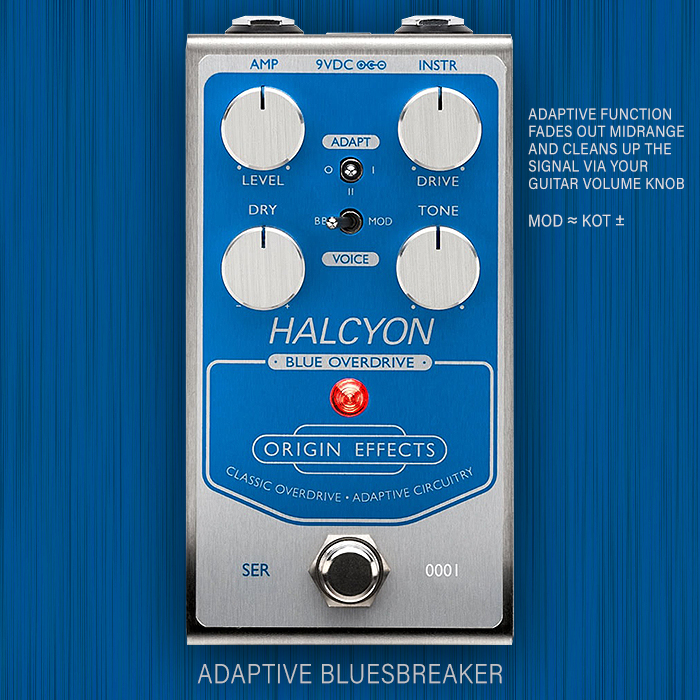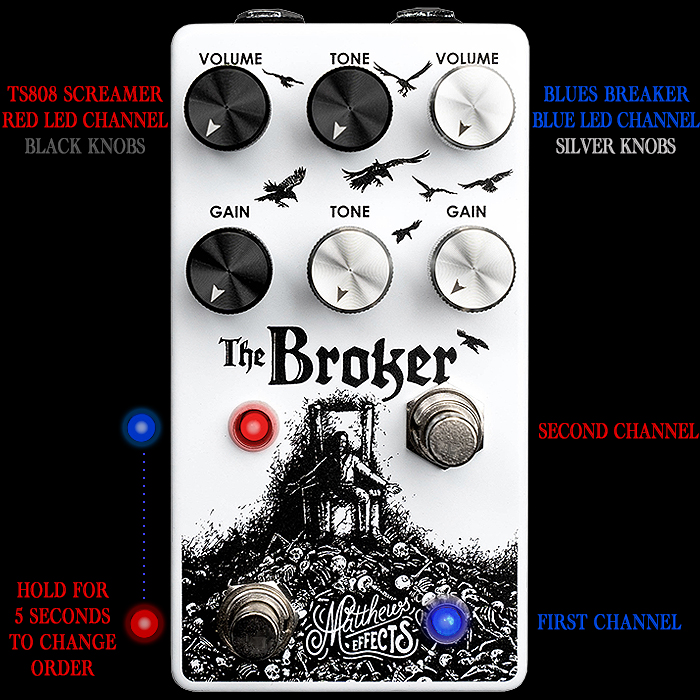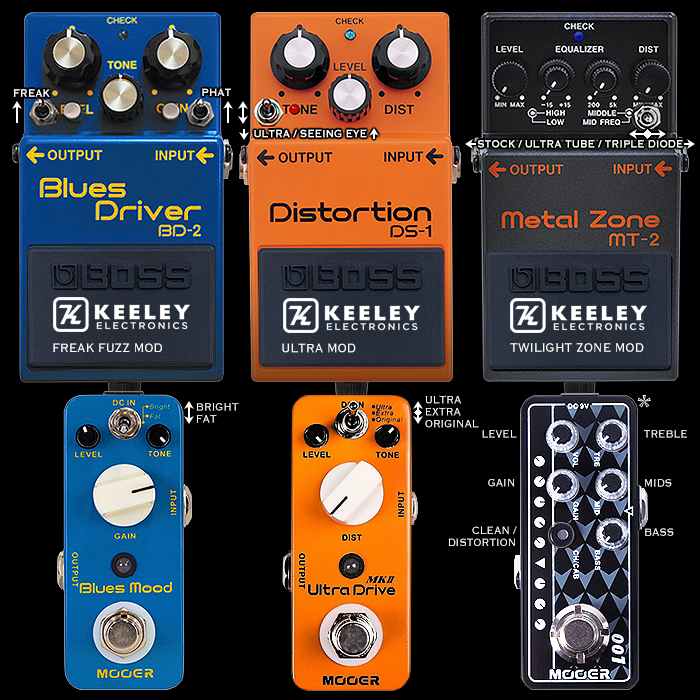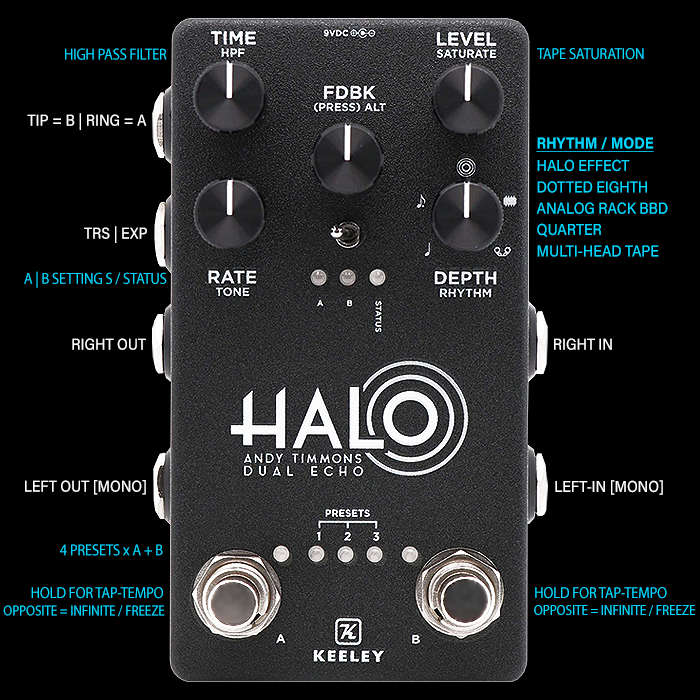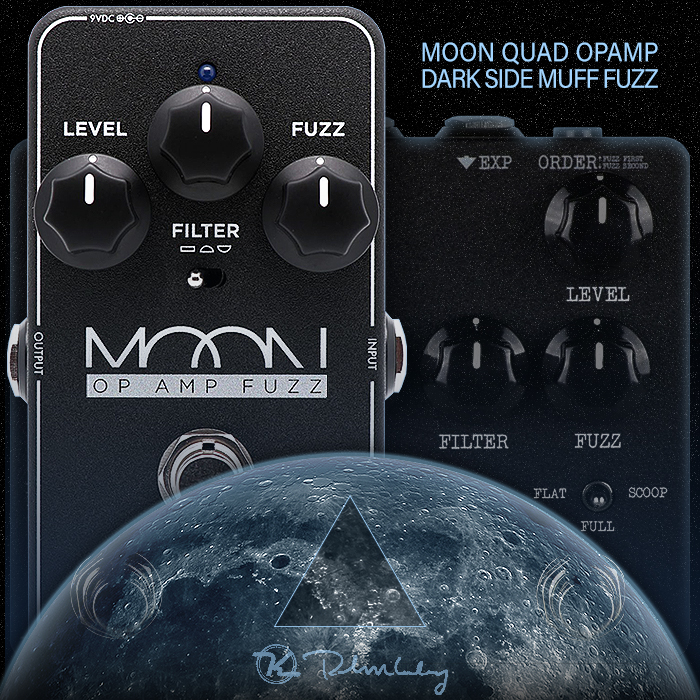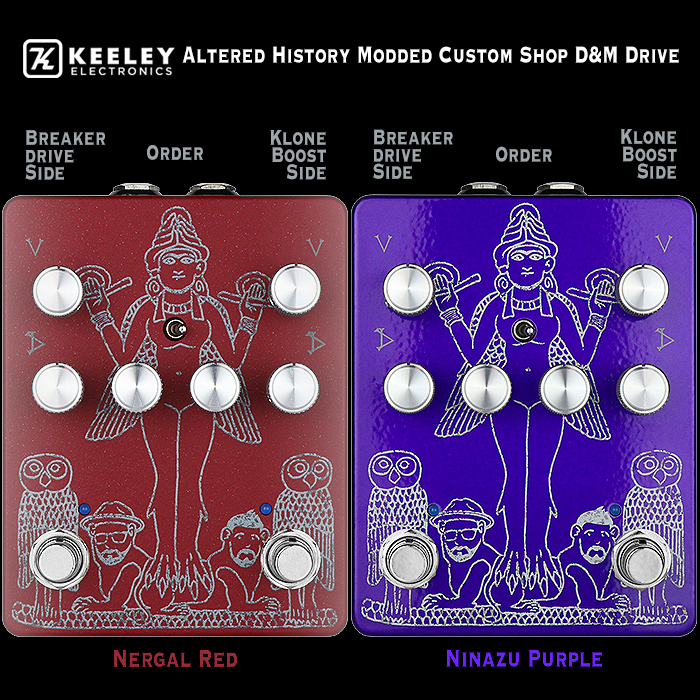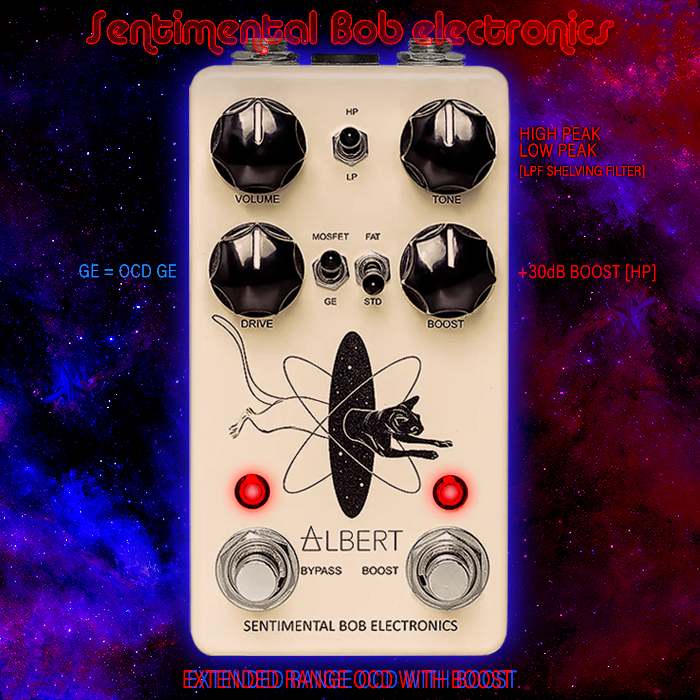Keeley Electronics 4-in-1 Series #2 : Blues Disorder - Marshall BluesBreaker x Fulltone OCD
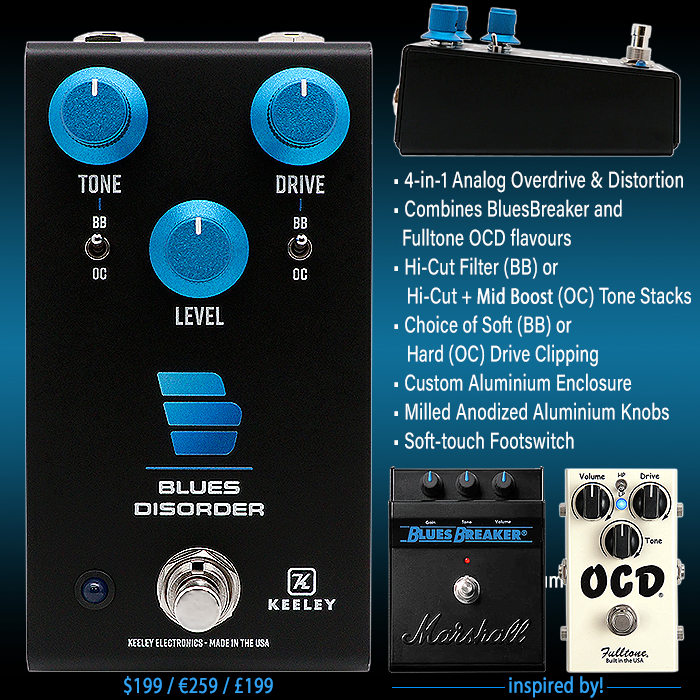
And so the second (for me) in the Keeley 4-in-1 Series, combines the Tone Stacks and Drive Clipping from the Marshall BluesBreaker Overdrive, and Fulltone OCD Drive / Distortion. The colour accent and knobs here are a fetching hue of blue - otherwise identical looking to the previously reviewed Noble Screamer.
The BluesBreaker side as such has a High Frequency Filter Tone Stack, and Soft Drive Clipping, while the OCD has an Active Midrange Boost with High Frequency Roll-Off, and a Hard Drive Clipping section.
As before, one of the combinations is noticeably weaker than the other - for my preferences of course. While the BluesBreaker Clipping with OCD Tone Stack is the big surprise here - as that is my favourite of the 4 combinations. It gives the BluesBreaker a fatter sound with more edge - which marvellously ends up even better balanced than the OCD with its own Tone Stack.
For the Noble Screamer, the Tube Screamer Clipping with ODR-1 Tone Stack was the surprise - although I still preferred the all-ODR-1 combination overall.
While for this Blues Disorder - my favourite mode is one of the hybrid alternatives - which may also be the case for the next one up for review - the Super Rodent - which I touched on briefly in my recent Compact Rat Distortions roundup!
While my favourite is an hybrid mode here - overall this pedal follows a similar pattern to the one I reviewed previously - with 2 combinations really fighting it out for the top podium spot, and then a clear third place and finally a weakest link as such.
So it’s the same odds as before - with 3 of the combinations pretty stellar, and one being the obvious runt of the litter. The OC + BB option though is pretty much worth the price of admission alone!
All 4-in-Series pedals are MAP / RRP priced at $199 in the US, €259 in the EU, and £199 in the UK, of course available direct from the Keeley Electronics Webstore, and at all leading dealers!
Controls : Tone, Tone Stack Switch : BB (High Frequency Filter EQ) / OC (Active Midrange Boost and High Frequency Roll-Off EQ), Drive, Drive Clipping : BB (Soft) / OC (Hard), Level.
The 4-in-1 Options :
EQ + CLIP Variations
--------------------
BB + BB = BluesBreaker Classic
OC + OC = OCD Classic
OC + BB = BluesBreaker with OCD Active Midrange Boost and High Frequency Roll-Off
BB + OC = OCD with BluesBreaker High Frequency Filter
As stated - the core BluesBreaker and OCD combination are very well balanced and classic sounding, with the BluesBreaker then really benefiting from the added oomph of the OCD Tone Stack. While the BB’s High Frequency Filter (and lack of Midrange Boost) somewhat softens and wakens the core OCD profile - rendering it somewhat anaemic for my taste.
As always - these are still interesting experiments - and give you great lessons in how instrumental the Tone Stack can be in delivering and optimal output for a circuit. I’ve always said that there is a real knack in picking out the perfect Tone Stack for each circuit - which really enhances all the most appropriate frequencies. For some builders there can be a somewhat short-sighted approach in sticking the same tone-stack on every circuit - while for one a simple LPF might be the right choice, and another could be better off with a Tilt-EQ and separate Contour control!
As for the Noble Screamer - one of the Tone Stacks is notably weaker, albeit it still kind of works well on its own original circuit. It just reinforces how important the choice of appropriate Tone Stack is!
Trial Sessions and Test Results
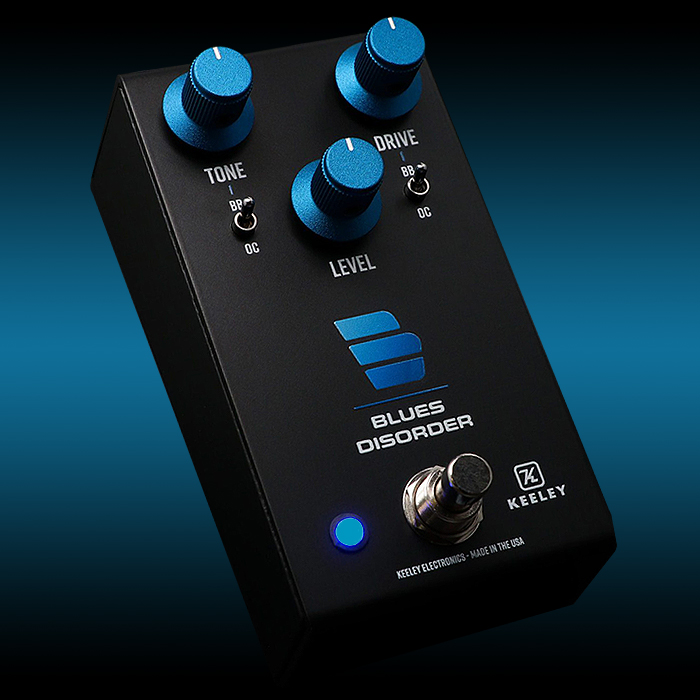
EQ + CLIP
---------
BB + BB : Tone @ 3 o'c, Drive @ 2 o'c, Level @ 3 o'c.
OC + OC : Tone @ 3 o'c, Drive @ 1 o'c, Level @ 3 o'c.
OC + BB : Tome @ 3 o'c, Drive @ 2 o'c, Level @ 3 o'c.
BB + OC : Tone @ Max, Dive @ 1 o'c, Level @ Max.
Most modes of operation work well with Tone @ 3 o'c and Level @ 3 o'c, with Drive at either 1 or 2 o'c. The only execption is the OCD Clipping + Blues Breaker Tone Stack which greatly reduced and softens the output of the core OCD Clipping Circuit. The lack of the Active Midrange Boost really impacts the output profile.
I did wonder for the previous Nobel Screamer model - if there was some way of adding a level boost to the weaker tone-stack - so you don't get hat noticeable Ouput Volume Drop - say throw in a couple of LEDs or similar!
I guess Robert didn't want to impact the authenticity of those circuits - while I'm all about securing the very best output. Which is why I don't particularly like vintage Fuzz Faces and Big Muffs - as they often have much lower output volumes - which can usually be improved by swapping a few resistors and complementary components around!
Favourite Modes in Order
EQ + CLIP
---------
OC + BB : Beefed up more vibrant Blues Breaker - with more Bite
OC + OC : Classic Marshall-esque distortion, really well balanced
BB + BB : Classic BluesBreaker, nicely balanced, but a little like the OC + BB's shyer cousin
BB + OC : De-fanged, softer OCD, but with good sustain
The top podium slot was a hard-fought affair with both Classic OCD and BluesBreaker with OCD Tone Stacks sounding fantastic. In the end I felt that the OC + BB voicing just about pipped it - with that extra bite it delivers - means the BluesBreaker has never sounded better.
The Classic OCD comes second by a whisker - that is beautifully balanced and richly textured too - a little more high gain than the Blues Breaker but not too different in impact with the same Tone Stack.
The Classic BluesBreaker voicing is really rather pleasant too, and even though I have numerous extended range BluesBreakers - this one's voicing holds up really well to those.
And then last, and definitely least is the OCD + BluesBreaker tone stack - it's like taking a magnificent wild beast and then de-fanging it and clipping off its claws. That voicing just sounds weaker and somewhat more insubstantial than the norm - and the lack of Active Midrange Boost results in less Volume and Attack too.
The 4-in-Series pedals are all priced at MAP / RRP $199 in the US, €259 in the EU, and £199 in the UK, of course available direct from the Keeley Electronics Webstore, and at all leading dealers!

Demos



















